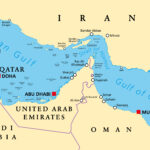American International Group Inc. is cutting prices to win new business and boost market share, competitors and others in the industry say, but taxpayers could again be stuck with the tab.
Since a U.S. government bailout, which last month swelled to more than $150 billion, industry executives say AIG has been lowering prices — even as market fundamentals indicated insurance rates need to rise.
In one example of aggressive rate-cutting, a unit of its commercial insurance division slashed its premium by 60 percent on some coverage for the Las Vegas McCarran International Airport.
Last year, the airport paid $3.54 million to a consortium of seven insurers led by Travelers Cos Inc for an insurance policy covering $1.7 billion in property, boilers and machinery, an airport spokesman said recently.
This year, Lexington Insurance Co., a large AIG unit, sold the coverage to the airport for just $1.4 million. The insurer agreed to take on the airport coverage with one other insurer, leaving fewer carriers to shoulder any potential losses.
John Doyle, CEO of AIG’s commercial insurance division, defended the company’s business decisions, saying underwriters do not provide coverage if the premium is too low to cover losses.
Doyle declined to discuss individual policies, but said in an interview Thursday the company has avoided situations that didn’t make business sense.
He cited U.S. workers compensation policies with guaranteed costs. The company walked away from $700 million in premiums on this business alone through the first nine months of the year.
His division, which sells 400 different products and services, checks on a weekly basis to make sure that strict underwriting controls have not been infringed, he added.
While AIG Commercial Insurance has lost some customers since its parent company was hit by financial losses, Doyle described the declines as “modest,” and said he is fighting to win customers back.
‘STUPID’ MOVES
AIG, once the world’s biggest insurer by market value, was rescued by the U.S. government in September after it nearly went bankrupt trying to meet obligations on bad mortgage bets.
In the wake of the bailout, it has been aggressively cutting rates, some say.
“AIG has intensified its effort to increase its market share, or at least preserve it,” said Edmund Kelly, chief executive of Boston-based rival Liberty Mutual.
“I think it’s fair to say they’re doing some very stupid things in the market,” Kelly told investors on a quarterly conference call last month. “If (AIG units) are not reined in, it could be very destabilizing for the market.”
By selling policies for less while taking on more risk, AIG raises the chances it could be hit by large losses. It also makes it harder for other insurers to sell policies priced high enough to cover potential losses.
“Cutting rates at a time when rates should be strengthening is a quick way to going out of business,” AIG’s former CEO, Maurice “Hank” Greenberg, a frequent critic of the company’s management, told Reuters.
Greenberg, who left AIG in 2005 and now runs several private insurance and investment firms, said there is little cross-over between his business and AIG, but where there is, his staff say AIG is beating down the market.
“In some classes that we do compete in, they are cutting rates to hold on to business,” Greenberg said in an interview.
The rate cuts come even as many analysts say deep investment losses and rising claims from a range of events, including hurricanes and lawsuits against financial executives, mean insurers are now widely expected to start charging more for many types of coverage when policies are renewed throughout 2009.
“Rate increases are necessary to make the returns commensurate with risk,” said Jeanne Hollister, managing principal of consulting firm Towers Perrin’s Americas property/casualty insurance practice.
IRRESPONSIBLE AND UNFAIR?
For AIG to fight the trend to raise rates could potentially weaken its own business as well as those of rivals.
“AIG has the money to do things that it could not do without (the money),” said Thom Bradshaw, an insurance wholesaler in Monticello, Indiana. “With $150 billion of taxpayer money we could all be more aggressive, but a) it is irresponsible and b) it is unfair” to the rest of the industry, he added.
Insurers sometimes use modeling techniques and other risk tools to price policies more competitively, but critics say in many cases AIG is simply driving down prices to win business.
When losses lead to an insurance company’s collapse, rivals often have to foot the bill through insurer-funded guaranty funds formed by many U.S. states and some countries.
Cliff Gallant, an insurance analyst with Keefe, Bruyette & Woods in New York, noted that AIG’s insurance units are highly rated and not at risk of collapse.
But if that changed, “it would cause considerable strain on the industry,” Gallant said.
It is also possible the U.S. government, as AIG’s majority owner, would feel obliged to step in with more financial support for the insurance subsidiaries if underwriting losses became a problem.
About $15 billion of a $60 billion government loan to AIG had already been consumed by its insurance units as of Nov. 5, according to the company’s latest quarterly filing. The commercial insurance division has not received any federal funding, according to Doyle.
“One way or another, I don’t see how it is avoidable: The amount that the government will ultimately apply to AIG will exceed the amount that it has provided so far,” said Donn Vickrey, an analyst with research firm Gradient Analytics.
(Reporting by Lilla Zuill; editing by John Wallace and Jeffrey Benkoe)
Was this article valuable?
Here are more articles you may enjoy.


 Three Insurers Reject Chevron’s $57 Million Claim for Iran Oil Seizure
Three Insurers Reject Chevron’s $57 Million Claim for Iran Oil Seizure  The Top 15 U.S. Metros with High Exposure to Wildfire Risk
The Top 15 U.S. Metros with High Exposure to Wildfire Risk  Update: Fannie Mae Guidelines Raise Concerns, Could Bar ACV Coverage for Homes
Update: Fannie Mae Guidelines Raise Concerns, Could Bar ACV Coverage for Homes  Rising Prices, Low Satisfaction Drive 49% of Customers to Shop For New Auto Insurance
Rising Prices, Low Satisfaction Drive 49% of Customers to Shop For New Auto Insurance 

